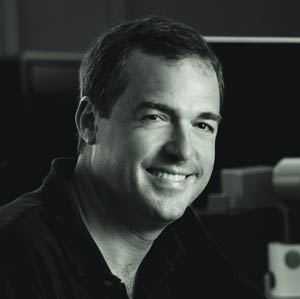Professor Vishton Leads Program at National Science Foundation

What’s the future in developmental and learning research? Just ask Professor Peter Vishton.
This past August, Professor Vishton began a two-year term as Program Director for Developmental and Learning Sciences at the National Science Foundation (NSF). The NSF is an independent federal agency created by Congress in 1950 and tasked with keeping the United States at the leading edge of scientific discovery.
In his NSF role, Vishton makes recommendations for where to allocate approximately $6 million in federal research funding that will add to our basic knowledge of how people learn and develop. Through a better understanding of the underlying developmental processes that support learning, the research aims to lead to better-educated children and adolescents who grow up to take productive roles as workers and as citizens.
“It feels good to have an impact on the field, influencing the focus of developmental research,” says Professor Vishton, who will not be teaching at the College during his two-year NSF term. “I really enjoy the opportunity. It is fun and interesting, and very different from my role at William and Mary doing research, writing, and teaching.”
Each year, the NSF’s Developmental and Learning Sciences program receives 150-200 grant proposals. Vishton sends each proposal out to four or five specialists in the field for review. Twice a year, a panel of seasoned experts meets to discuss the reviewed grants and make recommendations for funding. Vishton then takes these recommendations to the administrative arm of the NSF, which makes the actual grant awards.
“Ideally, we are looking for strong proposals that move research forward,” says Professor Vishton. “Transformative research that has the potential to revolutionize our understanding of things, not just fill in the details of existing theories.”
One of Vishton’s favorite things about his work with the NSF is the opportunity to be right at the frontier of current research. With research reported through scientific journals, there is an inherent delay between when a study is completed and when the research gets published. But in his role with the NSF, he is on the leading edge of what is being done.
“It’s a real privilege to read all these grant proposals,” says Professor Vishton. “I suddenly get to fast forward to see what people just finished doing and are about to do. When you read a really good proposal, you find yourself wanting to know what the results of the research will be.”
Vishton began his work with the NSF in the 1990s as a frequent reviewer for grant proposals. Later he was invited to be a panelist to assess proposals with a group of colleagues. In 2007, he jumped in for an eight-month term as interim Project Director when the previous director abruptly resigned. Then, last summer, he began his term as Program Director.
“Before working at NSF, I primarily worked with psychologists,” says Professor Vishton. “Now, I interact with a diverse, interdisciplinary group of economists, engineers, political scientists, anthropologists, linguists, and many others. It’s interesting to interact with a broad swath of sciences all at once and share ideas about things that affect all of us.”
Peter Vishton is an Associate Professor at William and Mary, and the creator of the DVD What Babies Can Do. He received his Ph.D. from Cornell University in 1996. He has taught at Amherst College, Dartmouth College, and Northwestern University. His research interests include cognitive, perceptual and motor development, as well as the interaction of vision and action systems. His research focuses mainly on visually-controlled actions, such as reaching.
 Skip to main content
Skip to main content
